Last-Minute NYC Holiday Gift Guide 🎁
We’ve created a holiday gift guide with presents for the intrepid New Yorker that should arrive just in time—


 The main floor of the auditorium is now used as storage for a furniture store. Photo by After the Final Curtain.
The main floor of the auditorium is now used as storage for a furniture store. Photo by After the Final Curtain.
While it isn’t surprisingly to know that some of New York City’s larger outer boroughs have several abandoned locations, many New Yorkers may not know that the bustling borough of Manhattan has a few inactive spots itself. From graffiti filled tunnels to cultural hubs to historic theaters and desolate subway platforms, there are many areas throughout Manhattan
While some are partially demolished and others have plans to eventually be redeveloped, several today simply lay forgotten in the heart of New York City, so keep an eye out as you walk the Manhattan streets or ride the subway in case you come across a piece of NYC history.
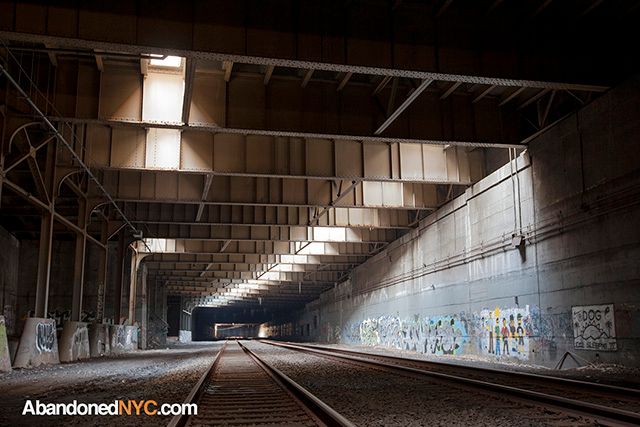
Image by AbandonedNYC
Located underneath Riverside Park on the Upper West Side, the Freedom Tunnel is one of the city’s most frequented off-limits transportation spots. According to Will Ellis’ book Abandoned NYC, the Freedom Tunnel was first constructed as part of Robert Moses‘ Westside Improvemet Project to address the problem of “Death Avenue,” a ground-level railroad track responsible for the deaths of several pedestrians. However, once the tunnel was completed, the rise of trucking made the track largely obsolete.
Many homeless people discovered the abandoned area by the mid-70s, and hundred resided there through the ’80s. However, in the 1990s Amtrak began laying new track, and many squatting there were forcibly removed by the NYPD in 1996. Today, the tunnels are remarkably clean, with the only signs of life from the graffiti on the walls. The graffiti of artist Chris Pape, nicknamed “Freedom” is the namesake for the tunnel. His graffiti recreated the works of Goya and Michelangelo and has remained on the walls for several decades before Amtrak began to paint over it in 2009.
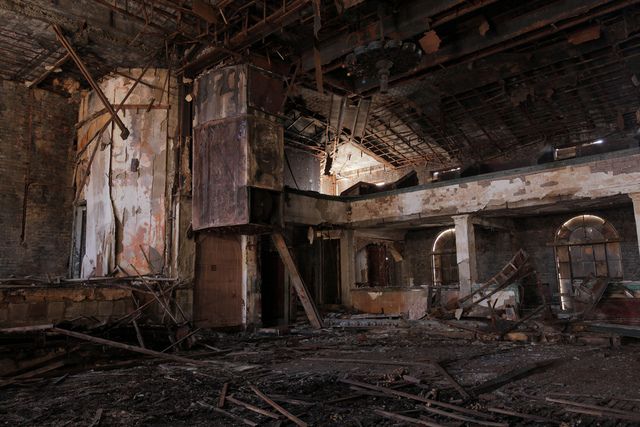
Image by AbandonedNYC
The Harlem Renaissance Ballroom was constructed in 1924 in Harlem, which was a center for Black culture in upper Manhattan. The Ballroom, nicknamed the “Rennie,” was home to a casino and a 900-seat theatre, and held parties, concerts, and film screenings among other things. Many came to the ballroom to dance to live jazz music. It was also a spot for professional basketball, as The New York Renaissance, also known as the Renaissance Big Five, played on the dance floor which was converted into a court and set a record of 88 consecutive wins.
According to Abandoned NYC, the Renaissance Ballroom shut down in 1979 when it was unable to keep up with the new clubs popping up around the city. The site was bought by the Abyssinian Baptist Church in 1991 with the hopes of renovating the spot and restoring the former community space. However, this plan did not pan out and changed in favor of the development of more expensive condominiums. While the former theater spot in now an empty lot, parts of the ballroom including the coat check area still remain.

In an abandoned one-story bank building, which stands at the intersection of Chelsea, the West Village and the Meatpacking District is abandoned gem like to no other. Inside this nondescript bank is a beautiful 1954 canvas painting by Julien Binford, entitled “A Memory of 14th Street and 6th Avenue” depicting New York City in the 1800s. A 110-foot-long piece that is currently housed in the lobby, it was discovered by Andrew Cronson, a junior from New York University, back in October.
He contacted several local preservationist groups once he saw demolition permits posted on the building and it has become a the subject of intense debate and preservation, but the site is slated to become condominiums and retail space at the hand of developer Gemini Rosemont, which purchased the property for $42.4 million earlier this year. The New York Times reports that the interior has already been stripped. While Gemini Rosemont is open to preserving the mural, the company has not committed to the cause. In the meantime, it has been considering the options and contacting galleries to determine their interest in acquiring the piece, and its actual value. So far, there have been no bites.
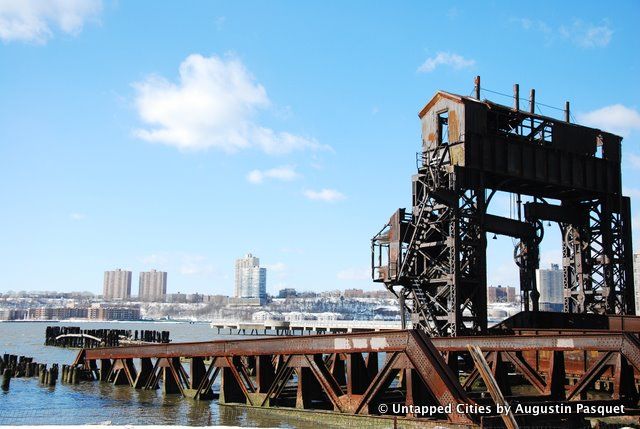
Located on W 69th Street, this bridge was once a transfer terminal for the West Side Line of the New York Central Railroad which allowed for the transportation of freight. The bridge was formerly floating in the Hudson River but it has been stabilized in recent years. Over 15 years ago, plans were proposed to turn the bridge into a ferry terminal. However, in 2008 the New York State Department of Environmental Conservation resisted this plan as it would endanger the aquatic life in the area.
Plans for the reconstruction of the bridge by the New York City Department of Parks & Recreation have been in progress since March of 2015. According to their website, “The schematic design for this project has been approved. Parks is now developing construction documents for this project and applying for necessary permits.”
The Hollywood Theater, residing in the East Village’s Avenue A between 6th and 7th Streets, first opened on March 11, 1926. It had several different owners during its years of operation. First, it was was owned by the Mayer & Schneider Circuit, then RKO, and finally Loew’s before it was eventually closed in 1959.
The Hollywood Theater’s orchestra and lobby have since been converted to retail space, with the orchestra converted into a health food store called the East Village Farm and the lobby laying abandoned for the past several years. Much of the theater’s exterior as well as the fire escape still remain. Unfortunately, the spot’s demolition began in 2015.
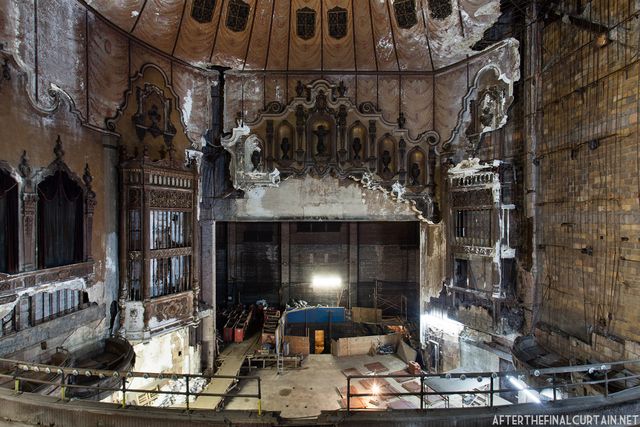
The main floor of the auditorium is now used as storage for a furniture store. Photo by After the Final Curtain.
Located at 31 Canal Street, Loew’s Canal Theater was built in 1927 and, at the time of its construction, the theater was New York City’s second largest theater, boasting 2,314 seats. Loew’s sold the theater to the Mayer & Schneider Circuit in 1929, though it quickly went bankrupt and was resold back to Loew’s within the year. The theater, designed by Thomas Lamb, was known for showing lesser known films and serials.
Though Loew’s Canal Theater closed in the 1950s, much of its decor remains in good shape. The facade of the building’s lobby has since been named a city landmark.
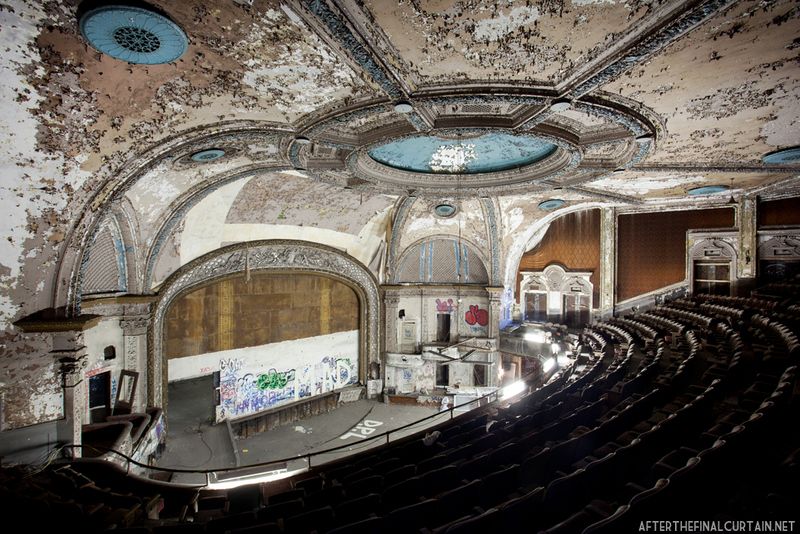
Image courtesy After The Final Curtain
Moss and Brill’s Hamilton Theater, which was later renamed the RKO Hamilton Theater, is located in Manhattan’s Hamilton Heights. The theater was opened on January 23, 1913 and was designed by Thomas Lamb, who also designed the Loew’s Canal Theatre. The theater was commissioned by vaudeville operator Benjamin Moss and Solomon Brillis, though when Moss retired in 1928 it was converted to a movie theater. It is notable for being one of the first theaters in New York City to exclusively play films.
It stopped showing films in 1958 and was bought by a church in 1965 before it was sold again sometime in the mid-1990s. Some of the theater was used for retail space while other parts were used as a warehouse. In 2000, the exterior of the theater was named a city landmark.
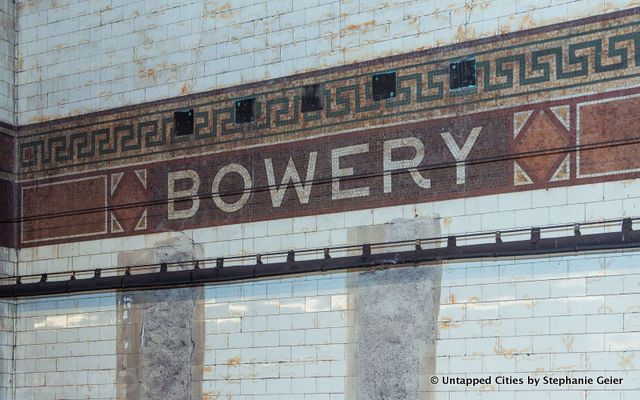
The abandoned Bowery Station Platform was originally designed with four tracks and two island platforms. However today only two tracks at this station continue to be used, after renovations in 2004 removed one of the tracks and another remains inactive. One of the clearest signs that this platform is abandoned is that the space is completely devoid of benches.
The Bowery Station Platform received some activity several years ago, as the spot was used by the NYPD to conduct terrorist drills, and a graffiti artist by the name of “VEW” created a Star Wars-themed Anti-ISIS graffiti mural.
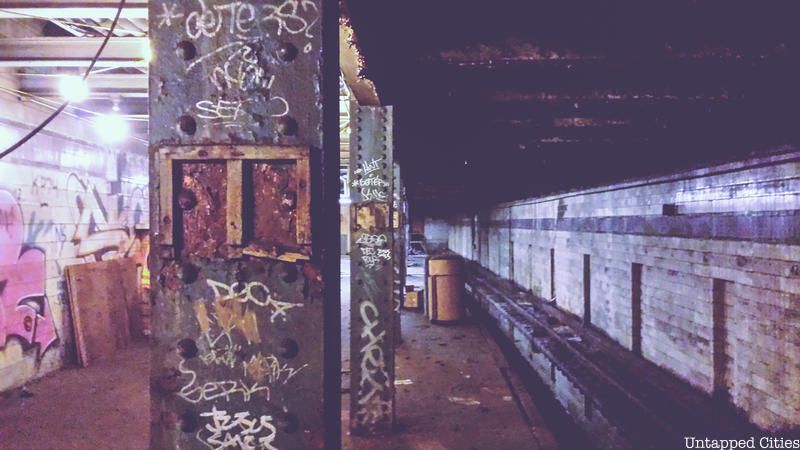
The reason for the construction of the lower level of the 42nd Street A/C/E line is unknown, especially because it did not run as part of the IND or IRT systems. However, we do know that this track was used for the special Aqueduct Racetrack train between 1959 and 1981. During some time in the 1970s, the line was used for the E train during the evening rush. All entrances to this abandoned track have been completely sealed except for one trap door at the south side of the platform.
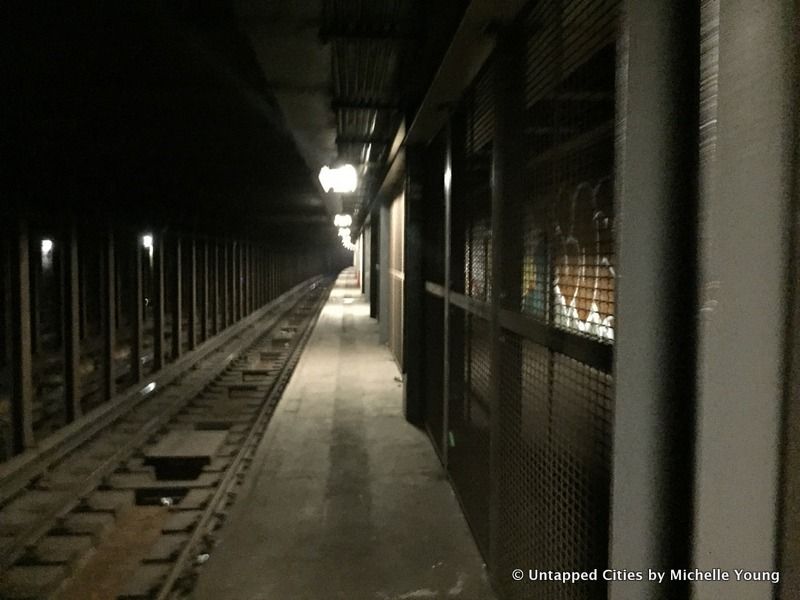
In 2012, renovations at the Bleecker Street subway stations- necessary to allow for transfers to the uptown 6, as it was previously only available for downtown 6 transfers- necessitated a southward shift in the subway platform as well as an extension northward.
You can still see the old, unused platform when departing on the 6 train, and some old advertisements from the year it was abandoned may still be visible. The 2012 renovation walled off the platform, and the mid-century green tiling along the platform has now mostly been covered over with graffiti. You can still see the platform if you look very carefully! The next time you find yourself rolling through north to Astor Place or south to Spring Street, be sure to keep an eye out for this abandoned station.
For more abandoned NYC in different boroughs, check out 10 Abandoned Places to Discover in the Bronx, NYC and 12 Abandoned Places to Discover in Brooklyn, NYC. A
Subscribe to our newsletter